Patient Education: Level 1
Develop in-office marketing materials
Develop a set of in-office marketing materials tailored to your patient population by identifying priority audiences, customizing messaging and content, and determining the format and channel(s) that will most effectively reach your patients. Strategically distribute the materials, monitor your efforts, and modify the content or approach as appropriate.
In-office marketing materials are a simple but effective way to increase patient education and awareness around adult immunizations. Consider your organizational goals around immunizations, which vaccines you want to market (e.g., influenza, pneumococcal, Td/Tdap, and/or zoster), and how in-office materials can support those efforts. For example, if you want to increase influenza vaccinations among adults receiving their COVID-19 shots, you may develop resources focused on coadministration.
To develop in-office marketing materials to support your immunization efforts, follow the steps below. Don’t forget to enlist help from your marketing department to explore how these materials can be integrated into your overall immunization program.
Step 1:
Determine priority audiences for marketing materials
Identify what segment of your patient population you are trying to reach. You may consider looking at gaps in care within your organization and targeting priority patient groups and/or vaccinations. You may also find value in targeting employees of your healthcare organization who can in turn make a strong vaccine recommendation to their patients.
Step 2:
Tailor messages and content to your audience
When creating your messaging and content, consider common barriers to vaccination among your target audience. Surveying providers and staff as well as patients can help you better understand why patients decline or hesitate to receive a vaccine (e.g., concern over the side effects of a shingles vaccine) or what obstacles specific patient groups are facing (e.g., time constraints of “the sandwich generation” or single parents). Develop simple, compelling content that addresses these concerns and combats any myths or misinformation. Ensure the content is culturally appropriate and accommodates the literacy level and language of your target audience.
Step 3:
Identify material format and location
Think carefully about the format and location of your materials and how to best reach your target audience. For inspiration, look at existing resources and points of care within your organization, such as:
- Check-in kiosks
- Printed brochures and flyers
- Waiting room TVs
- Digital content during telemedicine encounters
- Staff badges and buttons during face-to-face encounters and telemedicine appointments
Remember your marketing department may be able to provide a wide range of support, from reviewing content and branding to advising on guidelines for posters in waiting and exam rooms.
Step 4:
Deploy, evaluate, and modify
Ensure there are metrics to evaluate the effectiveness of your marketing materials once they have been deployed. Consider post-vaccination surveys (e.g., “How did you hear about our vaccination program?”), web metrics for electronic materials (e.g., unique monthly visitors), or small focus groups. Remember to refine materials as needed based on your findings.
Step 5:
Leverage special events and other timing-based opportunities
Increase patient education and awareness by pairing marketing with national observations like Shingles Awareness Month or days of action such as World Pneumonia Day. You may also time marketing efforts to coincide with events like the beginning of flu season or the release of new guidelines from the Centers for Disease Control and Prevention (CDC).
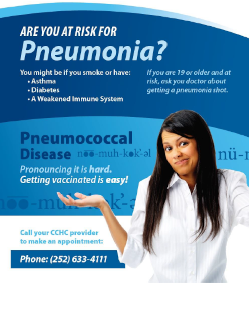
Pneumococcal High-Risk Poster
Coastal Carolina Health Care, PA
Encourages patients 19 years and older to consider if they are at high risk for pneumonia and need a vaccine(s).
View Tool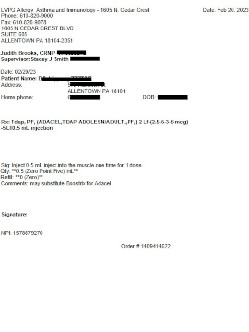
Td/Tdap and Zoster Rx Pads
Lehigh Valley Physician Group
Offers an example Rx pad to prescribe patients Td/Tdap or zoster vaccinations at an internal or external pharmacy.
View Tool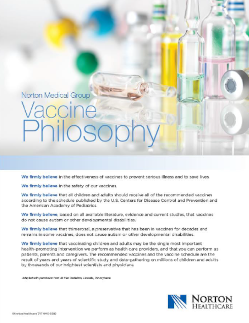
"Vaccine Philosophy" Signage
Norton Healthcare
Provides patients with a healthcare organization’s philosophy around vaccines, including the commitment to using vaccines to prevent serious illness and save lives. This signage also combats several unsupported beliefs around vaccines related to autism and developmental disabilities.
View Tool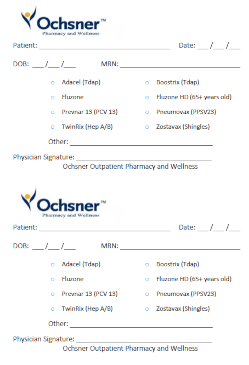
Immunization Rx Pad
Ochsner Health
Offers an example Rx pad to prescribe patients a vaccination at an internal or external pharmacy.
View Tool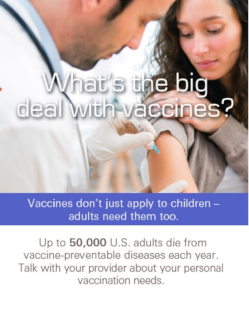
"What's the Big Deal with Vaccines?" Posters
The Iowa Clinic, P.C.
Conveys the importance of vaccines during adulthood to avoid vaccine-preventable disease and death.
View Tool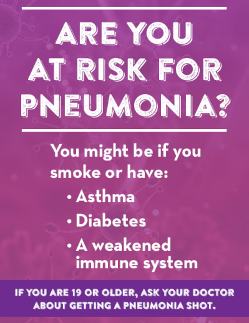
Pneumonia High-Risk Poster & Bookmark
The Polyclinic
Encourages patients 19 years and older to consider if they are at-risk for pneumonia and need a vaccine(s). The bookmark also outlines pneumonia symptoms and the effectiveness of pneumonia vaccines.
View Tool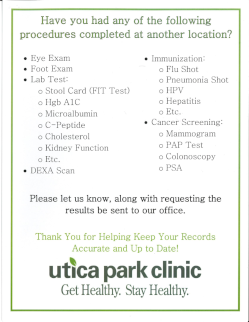
"Procedure at Other Location" Handout
Utica Park Clinic
Engages patients to consider if they have received care for specific procedures, including vaccinations, at another location and need to communicate that information to their healthcare provider.
View Tool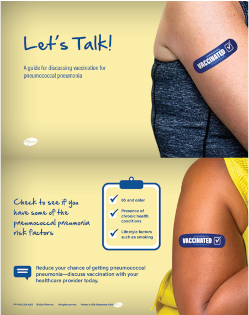
Pneumococcal Pneumonia Patient Discussion Guide
SPONSOR: Pfizer
Supports meaningful conversations between adult patients and their healthcare providers regarding vaccination to help prevent pneumococcal pneumonia. It includes facts about pneumococcal pneumonia and tips for assessing risk factors.
View ToolCampaign Planks
Provider & Staff Education
Clinical Support
IT / Documentation
Patient Education
